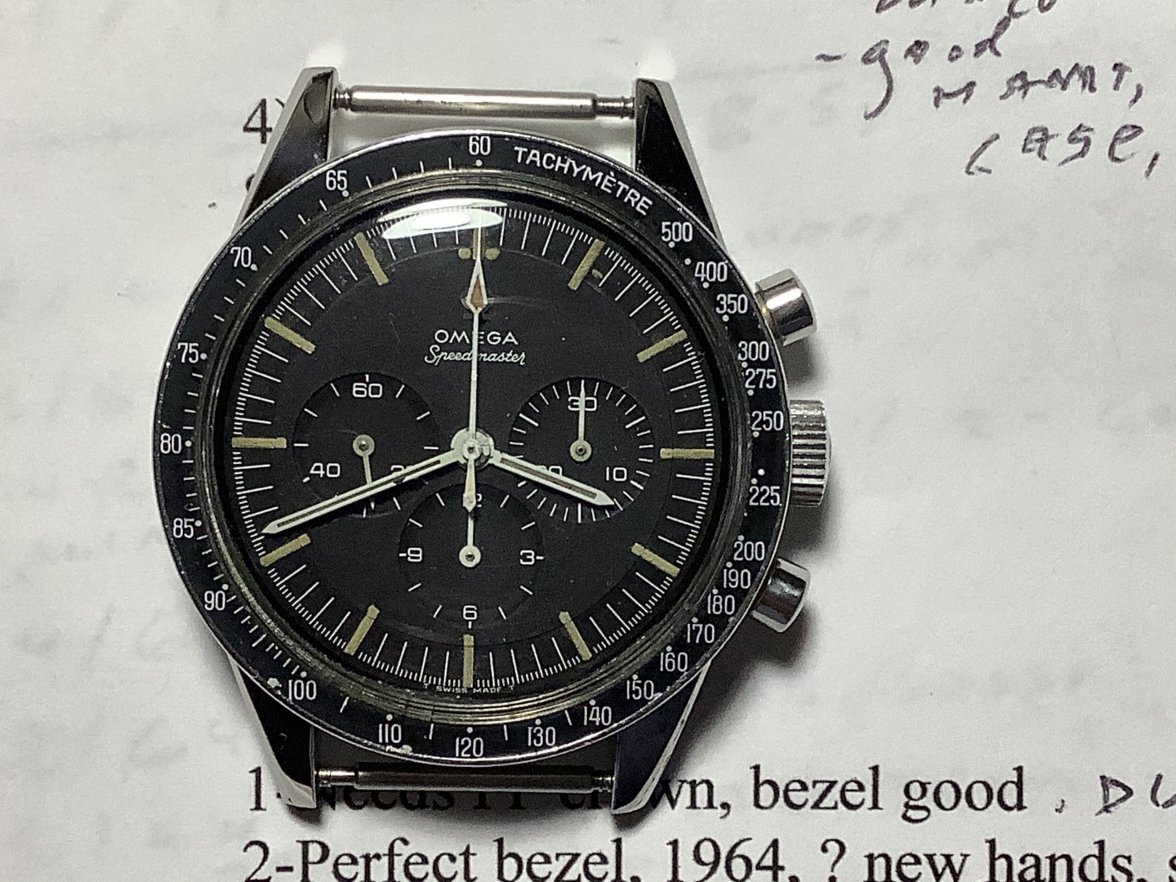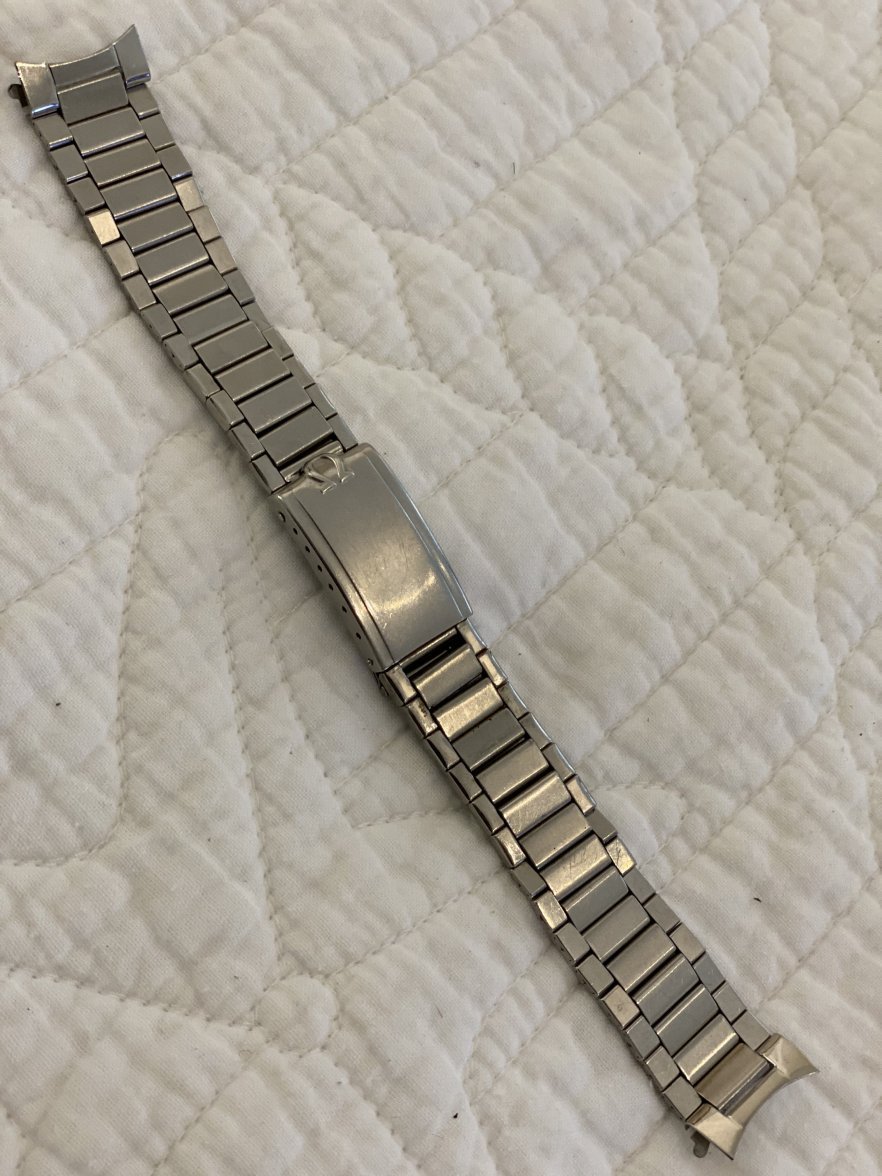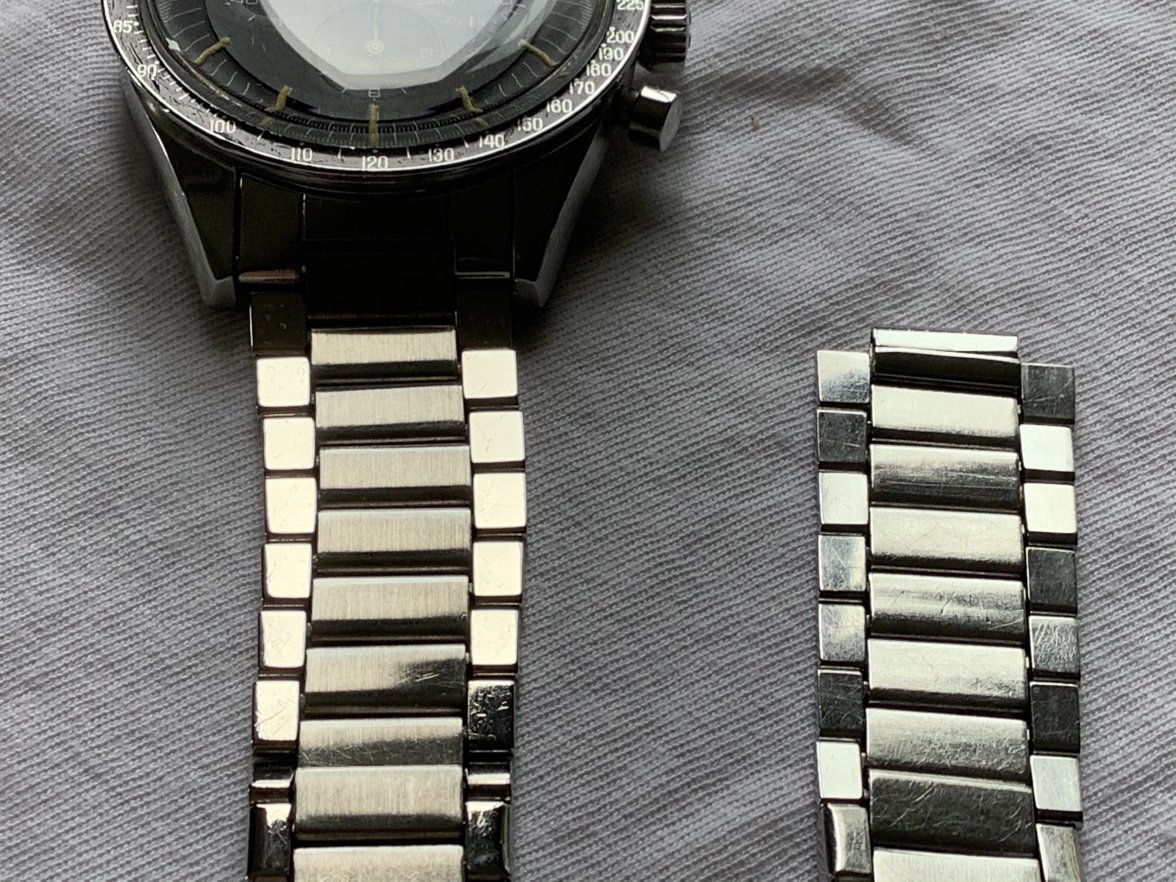Over the past bunch of years, the premium on “unmolested, original, unpolished, untouched” has dramatically increased. Years ago, watchmakers would routinely polish cases, for instance (some with a heavier had than others), and the practice was not really frowned upon.
So this watch falls into that category: this picture isn’t great, and the watch is in fairly original shape, but the case has been refinished, including a very high polish to the lugs tops. One thing I won’t do it to try and faux distress them - that would be a disaster.
So, I’ve been looking to fit a nice 7912 flat-link and I have this one. As you can see, completely unpolished, unmolested, blah, blah.
The problem is, when combined, the aesthetics won’t match. So herein lies the dilemma: would you join them as is, and leave it like that…or sympathetically polish the bracelet to make it go better with the case, knowingly devaluing its esteem and value? How about this on the left - does this look overdone in terms of restoration?
When do we get to the point where original clashes with visually pleasing?


